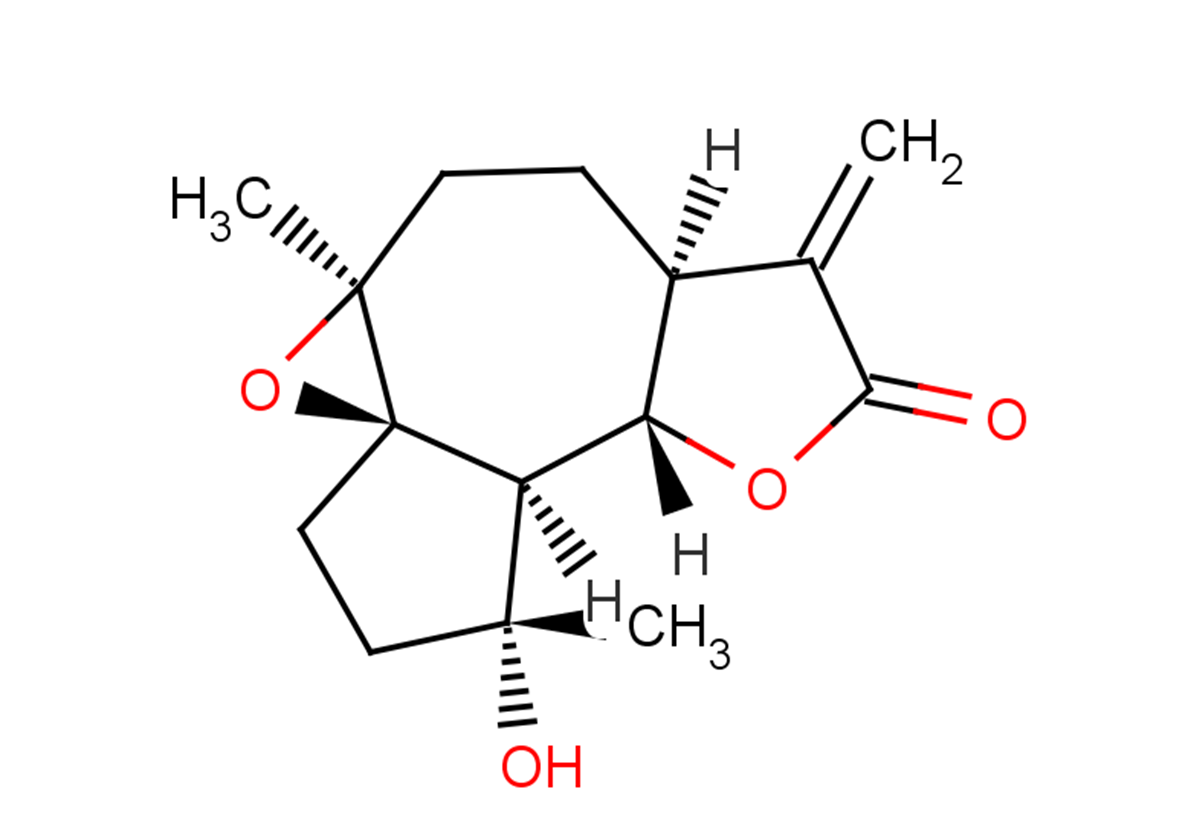
Epoxymicheliolide
CAS No. 1343403-10-0
Epoxymicheliolide( 1β,10β-Epoxymicheliolide )
Catalog No. M23502 CAS No. 1343403-10-0
Epoxymicheliolide is a novel guaiane-type sesquiterpene lactone isolated from Inula helenium L.
Purity : >98% (HPLC)
 COA
COA
 Datasheet
Datasheet
 HNMR
HNMR
 HPLC
HPLC
 MSDS
MSDS
 Handing Instructions
Handing Instructions
| Size | Price / USD | Stock | Quantity |
| 2MG | 122 | In Stock |


|
| 5MG | 178 | In Stock |


|
| 10MG | 267 | In Stock |


|
| 25MG | 464 | In Stock |


|
| 50MG | 662 | In Stock |


|
| 100MG | 888 | In Stock |


|
| 200MG | Get Quote | In Stock |


|
| 500MG | Get Quote | In Stock |


|
| 1G | Get Quote | In Stock |


|
Biological Information
-
Product NameEpoxymicheliolide
-
NoteResearch use only, not for human use.
-
Brief DescriptionEpoxymicheliolide is a novel guaiane-type sesquiterpene lactone isolated from Inula helenium L.
-
DescriptionEpoxymicheliolide is a novel guaiane-type sesquiterpene lactone isolated from Inula helenium L.
-
In Vitro——
-
In Vivo——
-
Synonyms1β,10β-Epoxymicheliolide
-
PathwayOthers
-
TargetOther Targets
-
RecptorOthers
-
Research Area——
-
Indication——
Chemical Information
-
CAS Number1343403-10-0
-
Formula Weight264.32
-
Molecular FormulaC15H20O4
-
Purity>98% (HPLC)
-
SolubilityDMSO:Soluble
-
SMILESC[C@]1(CC[C@](C2=C)([H])[C@@](OC2=O)([H])[C@@]3([H])[C@](C)(O)CC4)[C@]34O1
-
Chemical Name——
Shipping & Storage Information
-
Storage(-20℃)
-
ShippingWith Ice Pack
-
Stability≥ 2 years
Reference
1.Qi Z, et al. Study of effects of micheliolide on ovarian cancer cell lines and its mechanism. Zhonghua Fu Chan Ke Za Zhi. 2016 Sep 25;51(9):688-692.
molnova catalog



related products
-
SSAA09E3
SSAA09E3 is a novel inhibitor of SARS-CoV replication, acting by preventing fusion of the viral membrane with the host cellular membrane.
-
Super-TDU 1-31
Super-TDU (1-31) is a peptide of Super-TDU, which is an inhibitor of YAP-TEADs, shows potent anti-tumor activity.
-
Charantin
Charantin is a steroidal saponin isolated from Momordica charantia. It increases the release of insulin and slowing down gluconeogenesis. Charantin can inhibit GSK-3.



 Cart
Cart
 sales@molnova.com
sales@molnova.com


